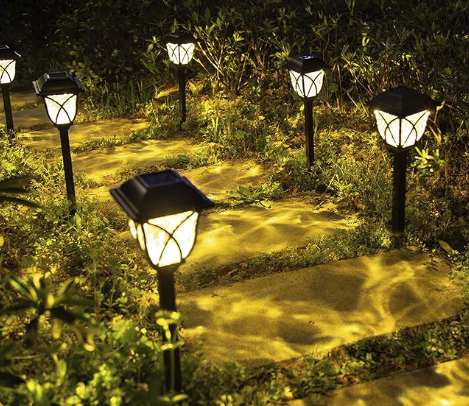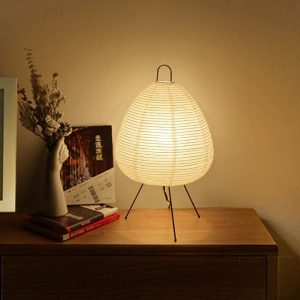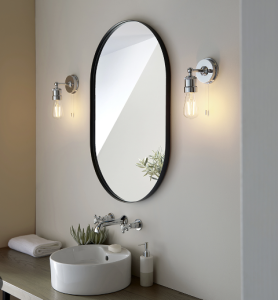
Enhance Your Garden with Outdoor Lighting
Outdoor lighting serves a multitude of purposes that extend far beyond mere aesthetics. One of the most significant advantages is the enhancement of safety and security. Well-illuminated pathways, driveways, and entryways deter potential intruders and reduce the risk of accidents caused by tripping or falling in poorly lit areas.
When homes are equipped with strategically placed lights, they create a welcoming atmosphere while simultaneously providing peace of mind for residents. This sense of security is particularly important for families with children or elderly members, as it allows them to navigate their surroundings with confidence, even after sunset. In addition to safety, outdoor lighting can dramatically transform the ambiance of a garden or outdoor space.
The right lighting can highlight architectural features, illuminate beautiful landscaping, and create a warm, inviting environment for gatherings and social events. Whether it’s a cozy dinner party on the patio or a festive celebration under the stars, well-designed outdoor lighting sets the mood and enhances the overall experience. Furthermore, outdoor lighting extends the usability of outdoor spaces, allowing homeowners to enjoy their gardens and patios long after daylight fades.
This versatility not only increases the enjoyment of these areas but can also add value to the property by making it more appealing to potential buyers.
Types of Outdoor Lighting
Ambient Lighting for Relaxation
One popular type of outdoor lighting Rcc24 is ambient lighting, which provides a soft glow that fills an area with light without being overly harsh. This type of lighting is often achieved through fixtures such as wall sconces or lanterns that create a warm atmosphere for relaxation and socializing.
Task and Accent Lighting for Functionality
In contrast, task lighting is designed to illuminate specific areas where activities take place, such as cooking on an outdoor grill or reading on a patio. This can be accomplished with focused fixtures like spotlights or under-cabinet lights that direct illumination exactly where it’s needed. Accent lighting, on the other hand, is used to highlight particular features in a garden or landscape, such as illuminating a beautiful tree, a water feature, or a sculpture, drawing attention to these focal points and enhancing their visual appeal.
Pathway Lighting for Safety and Charm
Pathway lighting plays a crucial role in guiding guests safely through outdoor spaces. These lights are typically low to the ground and spaced along walkways to ensure visibility while adding an element of charm to the landscape. With such a variety of options available, homeowners can mix and match different types of outdoor lighting to create a cohesive and functional design that meets their specific needs.
Choosing the Right Outdoor Lighting for Your Garden
Selecting the appropriate outdoor lighting for your garden involves careful consideration of several factors, including the size and layout of the space, the intended use, and personal aesthetic preferences. First and foremost, it’s essential to assess the garden’s features and determine which areas require illumination. For instance, if you have a large garden with multiple pathways and seating areas, you may want to incorporate a combination of ambient and task lighting to ensure that all spaces are adequately lit.
Conversely, smaller gardens may benefit from fewer fixtures that provide both functional light and decorative appeal. Another critical aspect to consider is the style of your home and garden. Outdoor lighting should complement the existing architecture and landscaping rather than clash with it.
For instance, modern homes may look best with sleek, minimalist fixtures, while traditional homes might benefit from ornate lanterns or vintage-style sconces. Additionally, color temperature plays a significant role in setting the mood; warmer tones create a cozy atmosphere, while cooler tones can lend a more contemporary feel. By thoughtfully considering these elements, homeowners can select outdoor lighting that not only enhances functionality but also elevates the overall aesthetic of their garden.
Installation Tips for Outdoor Lighting
Installing outdoor lighting can be a rewarding project that significantly enhances your home’s exterior; however, it requires careful planning and execution to achieve optimal results. Before beginning installation, it’s crucial to map out your lighting design. This involves identifying key areas that need illumination and determining the type of fixtures that will best serve those purposes.
Creating a layout on paper can help visualize how different lights will interact with one another and ensure that no areas are left in darkness. Additionally, considering the power source is essential; some fixtures may require hardwiring while others can be powered by solar energy or batteries. Once you have your design in place, proper installation techniques are vital for both functionality and safety.
For hardwired systems, ensure that all electrical connections are secure and comply with local codes to prevent hazards such as short circuits or electrical fires. If you’re using solar lights, choose locations that receive ample sunlight during the day to maximize their efficiency at night. Furthermore, consider using timers or smart technology to automate your lighting system; this not only adds convenience but also helps conserve energy by ensuring lights are only on when needed.
By following these installation tips, you can create an effective outdoor lighting system that enhances your garden while ensuring safety and longevity.
Maintenance and Safety for Outdoor Lighting
Maintaining outdoor lighting is essential for ensuring its longevity and effectiveness over time. Regular upkeep involves checking fixtures for any signs of wear or damage, such as cracked lenses or corroded wiring. Cleaning fixtures periodically is also important; dirt and debris can accumulate on lights, diminishing their brightness and overall performance.
For solar lights, ensure that solar panels are free from obstructions like leaves or snow that could block sunlight during the day. By establishing a routine maintenance schedule—perhaps once every season—homeowners can keep their outdoor lighting systems functioning optimally. Safety should always be a top priority when dealing with outdoor lighting systems.
It’s crucial to ensure that all electrical components are weatherproofed to prevent moisture damage, which can lead to electrical failures or hazards. Additionally, if you notice any flickering lights or inconsistent performance, it may indicate an underlying electrical issue that requires immediate attention from a qualified electrician. For those using extension cords or temporary lighting solutions for events, ensure that they are rated for outdoor use and positioned safely to avoid tripping hazards.
By prioritizing maintenance and safety measures, homeowners can enjoy their outdoor lighting without worry.
Creative Ways to Use Outdoor Lighting in Your Garden
Creating a Whimsical Atmosphere
The creative application of outdoor lighting can transform an ordinary garden into an enchanting space filled with charm and character. One innovative approach is to use string lights or fairy lights draped across trees or along fences to create a whimsical atmosphere reminiscent of a magical evening under the stars. These lights can be used for casual gatherings or romantic dinners al fresco, providing just the right amount of illumination without overwhelming the natural beauty of the surroundings.
Adding Color and Pattern to Your Garden
Incorporating colored lights can add an exciting twist to your outdoor space. Changing hues can set different moods for various occasions throughout the year. Another imaginative way to utilize outdoor lighting is through projection techniques that cast patterns or images onto surfaces such as walls or pathways. This could include projecting floral designs during springtime gatherings or festive motifs during holiday celebrations.
Highlighting Your Garden’s Best Features
Using uplighting to highlight trees or architectural features can create dramatic shadows and depth in your garden at night. By experimenting with various placements and types of fixtures—such as lanterns on tables or spotlights directed at focal points—homeowners can craft unique visual experiences that enhance their outdoor spaces in unexpected ways.
Eco-Friendly Options for Outdoor Lighting
As environmental awareness continues to grow, many homeowners are seeking eco-friendly options for outdoor lighting that minimize energy consumption while still providing effective illumination. One of the most popular choices is LED lighting, which uses significantly less energy than traditional incandescent bulbs while offering longer lifespans. LEDs are available in various styles and brightness levels, making them versatile enough for any outdoor setting—from pathway lights to decorative fixtures adorning patios.
By switching to LED technology, homeowners not only reduce their carbon footprint but also save on electricity bills over time. In addition to LED options, solar-powered lights have gained popularity as an eco-friendly alternative for outdoor illumination. These lights harness sunlight during the day to power themselves at night, eliminating the need for electrical wiring altogether.
Solar lights come in various designs—from decorative garden stakes to functional wall-mounted fixtures—allowing homeowners to choose options that best suit their needs while promoting sustainability. Furthermore, many solar lights now feature advanced technology that allows them to store energy efficiently even on cloudy days. By embracing these eco-friendly solutions, homeowners can enjoy beautifully lit gardens while contributing positively to the environment.


